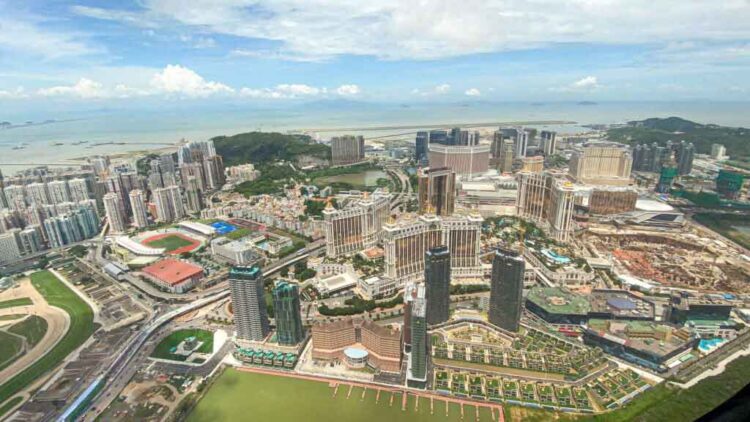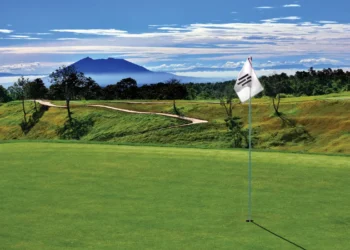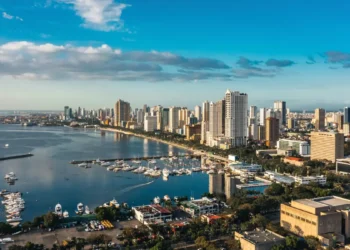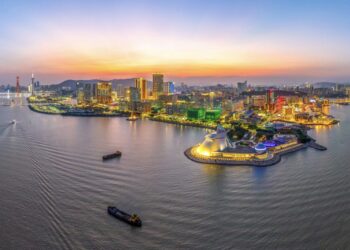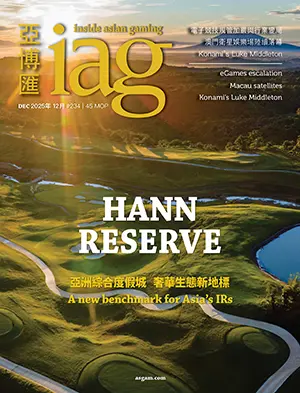We here at IAG are always a little bit “on alert” on Friday afternoons and public holiday eves, because if the Macau government is going to make a newsworthy announcement or drop some juicy tidbit of information, this is often when it happens.
And so it was late Friday afternoon at a Macau Executive Council press conference, when Adriano Marques Ho, Director of the Macau Gaming Inspection and Coordination Bureau (DICJ), revealed that his office had estimated the amount of gaming revenue sourced from “foreign players” in 2019 was a mere 3.58% of casino gaming revenue. Remember that number because we will come back to it.
The term “foreign players” is understood to mean players from outside Macau’s definition of greater China – that is the mainland, Hong Kong, Taiwan and, of course, local Macau players.
Much has been made during the recent revision to the Macau gaming law, and the concession tender process, of the government’s desire to attract more foreign players. On 13 May 2022 government officials mentioned that for foreign play they intend to reduce one or both of two compulsory charges levied under Article 22 of the Macau Gaming Law, which total 5% of GGR.
Now that we know the “3.58% from foreigners” number, it allows for a very interesting piece of analysis, from which we can estimate how much money each of the concessionaires would be likely to save in gaming charges from the Macau government under the initiative to encourage foreigner-sourced play.
Before diving into some analysis, let’s examine the composition of visitation to Macau. The tables below have been created from data available from the Macau Statistics and Census Service (DSEC), who by the way do an excellent job. I’ve selected 2019 as the most recent pre-pandemic year.
MACAU 2019 VISITATION
|
Region |
Visitors |
% |
|
Mainland China |
27,923,219 |
70.9% |
|
Hong Kong |
7,354,094 |
18.7% |
|
Taiwan |
1,063,355 |
2.7% |
|
Greater China |
36,340,668 |
92.2% |
|
Outside greater China |
3,065,513 |
7.8% |
|
Total visitation |
39,406,181 |
100.0% |
|
Source: DSEC |
||
MACAU 2019 VISITATION FROM OUTSIDE GREATER CHINA
|
Source region |
Visitors |
Percent of |
Percent of all visitors |
|
Korea |
743,026 |
24.2% |
1.89% |
|
Philippines |
423,106 |
13.8% |
1.07% |
|
Japan |
295,783 |
9.6% |
0.75% |
|
Europe |
277,834 |
9.1% |
0.71% |
|
Malaysia |
206,277 |
6.7% |
0.52% |
|
United States |
199,800 |
6.5% |
0.51% |
|
Indonesia |
169,957 |
5.5% |
0.43% |
|
Thailand |
151,521 |
4.9% |
0.38% |
|
India |
127,351 |
4.2% |
0.32% |
|
Singapore |
115,742 |
3.8% |
0.29% |
|
Americas outside US |
115,618 |
3.8% |
0.29% |
|
Rest of Asia |
113,150 |
3.7% |
0.29% |
|
Australia and NZ |
98,939 |
3.2% |
0.25% |
|
Rest of world |
27,409 |
0.9% |
0.07% |
|
Total |
3,065,513 |
100.0% |
7.78% |
|
Source: DSEC |
|||
Interestingly, the DICJ estimates that 7.78% of the visitors account for only 3.58% of the revenue. In other words, foreigners gamble at about half the rate of Chinese. Sounds plausible to me.
At this stage we have no idea how much the government intends to reduce the 5% in GGR charges, it could be anything from almost nothing to all of it, so let’s just pick the middle of the range and say 2.5% charge reduction.
Next, what is the likely GGR for the foreseeable future in a post-covid zero Macau? We know GGR for the 2019 year was MOP$292 billion (US$36.5 billion), but that is before the decimation of the junket industry and the much stricter application of capital controls from mainland China. Personally, I think we’re heading for medium term post-covid zero GGR stabilization around MOP$8 billion monthly, which is MOP$96 billion (US$12 billion) annually, but some see that as too pessimistic. Let’s be generous and go for 50% of the 2019 levels, so that would be MOP$146 billion (US$18.3 billion).
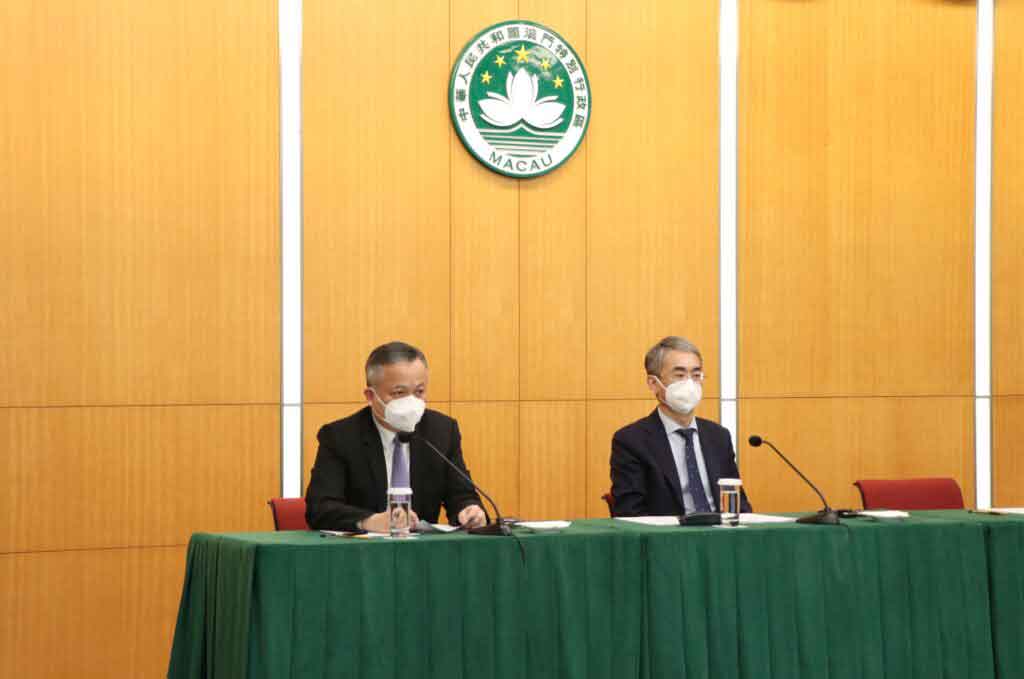
At Friday’s press conference we learnt that the government intends to ask the concessionaires to establish exclusive gaming zones for foreign visitors, with specially designated gaming chips, to help determine the amount of revenue generated by foreign passport holders. But what’s to keep foreigners from leaving these zones and playing elsewhere for any one of a multitude of reasons ranging from “bad luck” to not wanting to show ID to prove they are foreigners to “wanting to mix it with the Chinese”? Nothing. So we need to assign a percentage to the amount of foreign play that will actually be tracked as foreign play. This percentage will be highly dependent on whatever incentives the concessionaires may create for foreigners to play in the foreigners-only zones. Let’s be kind and assign a percentage of say 67% to this number.
Plugging all these numbers into a calculation gives the following:
2.5% x 3.58% x 67% x (50% x US$36.5 billion)
= US$11.1 million for all six concessionaires
= an average of US$1.8 million per concessionaire per year
Where:
- 2.5% is the mid-range of possible GGR charge reduction on foreign play,
- 3.58% is the DICJ’s estimate of foreign-sourced GGR,
- 67% is an estimate of the amount of foreign play that will occur in foreign-only zones, and
- 50% x US$36.5 billion is the estimate of post-covid zero stabilized medium term annual GGR
It is noteworthy that this US$1.8 million per concessionaire per year estimate represents just 0.06% of GGR, or if you prefer just 0.15% of the total gaming taxes and charges imposed by the government.
Of course for the larger concessionaires, the estimated savings would be a bit more, perhaps up to US$2.3 million, and for the smaller concessionaires, the estimated savings would be a bit less, perhaps around US$1.3 million. But whichever way you cut it, these amounts don’t even move the needle.
There will be considerable costs the concessionaires will have to bear (yet again!) to establish and operate these foreign-only zones. They will have to buy whole new chip sets, which is a very expensive exercise. There will be a new set of SOPs to create for the foreign-only zones, with the ongoing cost of staff training and different operations. Concessionaires will have to offer something to incentivise foreigners to actually play in those zones. All this is likely to cost a lot more than US$1.8 million, so the entire exercise may even prove to have a negative effect on EBITDA, especially so in the first year or two of implementation.
I do understand the government is trying to incentivise the operators to increase that 3.58% to a higher number but given the structural deficiencies of Macau and its long-term unattractiveness to foreign visitors, that is going to be a very tall order.
The opportunity to save a minuscule fraction of government taxes and charges isn’t going to get the concessionaires excited about this initiative at all.






